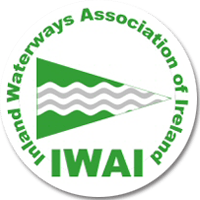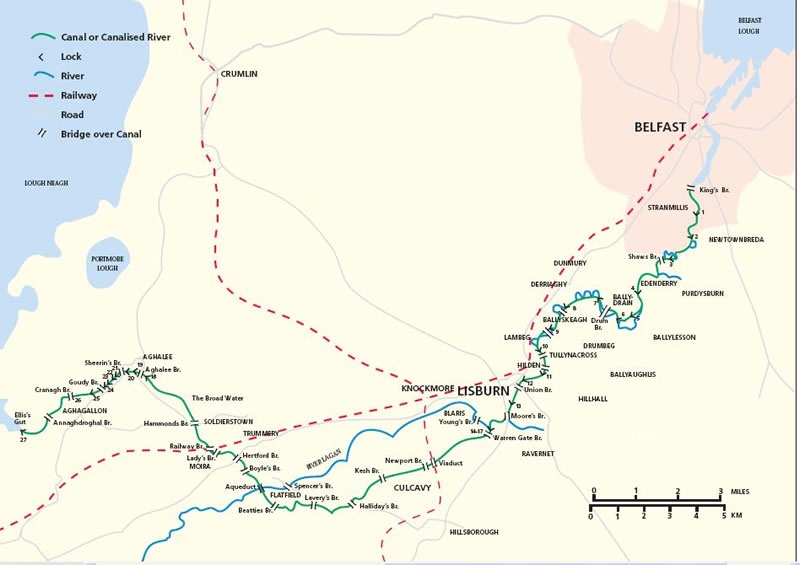Restoration
In recent years various organisations and government bodies e.g.Ulster Waterways Group, DCAL and the Rivers Agency in conjunction with several city councils have carried out restoration works and projects along the Lagan navigation.
Belfast City Council has endorsed the £2.5 million Stranmillis Gateway Project and prioritized this project to build a new lock at Stranmillis linking the tidal Lagan with the old inland navigation and provide a new footbridge and weir. Studies are also being undertaken to investigate the potential restoration of Lock2.
Castlereagh Borough Council in conjunction with DCAL, the River’s Agency and LVRP are completing the restoration of lock 3 and the old lock keeper’s cottage with monies from the Heritage Lottery Fund under their Landscape Partnership Scheme. There is also the new visitor’s centre and restaurant here.
Mission
To achieve the restoration and revitalisation of the Lagan Canal and its corridor – in ways which conserve and enhance the built and natural heritage, maximise recreational and tourism opportunities, involve and benefit the local communities and their visitors, and contribute to the local and regional economies.
Strategic Aims
- to provide a partnership-based vehicle, through which the principal public and voluntary sector organisations can work together to achieve the necessary support, funding and implementation works to restore the Lagan Canal for navigation
- to contribute to safeguarding, enhancing and promoting awareness and appreciation of scenic, natural, built and cultural heritage values of the Canal and its corridor
- to maximise the recreational and visitor potential of the Canal and its towpath; thereby contributing to the well-being and economy of communities in the vicinity of the Canal
- to promote and facilitate the awareness, support and involvement of local communities, current and potential users of the Canal corridor, businesses and developers in programmes and activities relating to the restoration, use and enjoyment of the Canal and its towpath.
- to establish and sustain an effective organisational structure and modest staff capability to achieve the above aims.
Partnerships
The Lagan Canal Restoration Trust’s key partners are:
Local Councils
Belfast City Council
Castlereagh Borough Council
Lisburn City Council
Craigavon Borough Council
NIEA – Built Heritage
DCAL
IWAI
IWAI – Lagan Branch
Ulster Waterways Group
Key Benefits of Restoration
Environment and Heritage
Economic Regeneration
Tourism
Educational Profile
Sport, Recreation & Leisure
Community Ownership
Other Benefits of Restoration:
Lagan Canal Way – walking, cycling, some horse-riding
enhanced biodiversity + green corridor
safeguard industrial heritage
economic benefits from visitors’ expenditures
inward investment + increases in property values
community pride, involvement + active lifestyles
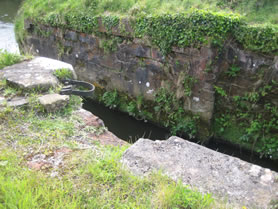
The waterways in Northern Ireland all revolve around, Lough Neagh, Ulster’s Inland Sea. The Lough is approximately 19 miles long and about 10 miles wide. It covers 149 square miles and has over 77 miles of shoreline. Five of the six counties touch its shoreline, Antrim, Down, Armagh, Tyrone and L’derry.
The lough has a maximum depth of about 100 feet and an average depth of 31 feet. It is fed by the rivers Moyola, Main, Six Mile Water, Upper Bann and the Blackwater while the only outlet is the Lower Bann.
All of the canals of Ulster were connected to Lough Neagh with the exception of the Strabane Canal. The lough is the largest fresh water lake in the United Kingdom and has been the key to communications and travel throughout the North for centuries. Historical research shows the Vikings used the waterway as a means of penetrating inland. The canals which connected into Lough Neagh were the Newry Canal which effectively linked the town of Newry with Portadown and onwards to the Lough using the Upper Bann, the Ulster Canal which linked Lough Neagh with the West, Lough Erne and Enniskillen and the Lagan Canal which linked Lough Neagh with Belfast. There was also a smaller canal which linked the River Blackwater with Coalisland. The oldest summit canal in all of these islands is the Newry Canal, which dates back to 1742.
The Lagan stretches for 27 miles from Belfast to Lough Neagh. The Navigation is comprised of two distinct sections i.e. Belfast to Lisburn, and Lisburn to Lough Neagh. The first section of navigation, between Belfast and Lisburn utilised the River Lagan. It includes short stretches of ‘still water’ canal cuts with associated weirs and locks to avoid obstacles in the natural river channel. The second section was a completely ‘still water’ canal section passing close to Moira, through Aghalee and on to Lough Neagh. The central section of the canal between Sprucefield and Moira was lost when the M1 Motorway was constructed in the 1960’s.
The Lagan towpath is open today for public use in three different sections: 1st, Stranmillis to Sprucefield; 2nd, Moira to Aghalee and 3rd, Crannagh Bridge, Aghagallon to Annadroughal Bridge, Aghagallon.
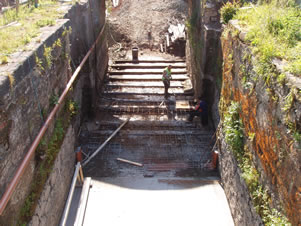
As part of the Lagan Corridor Strategy for regeneration (Lagan_Corridor_Strategic_Framework.pdf) Lisburn City Council reopened the new £25m Lagan Valley Civic, Arts and Conference Centre on what was the Old Island Mill site close to Union Bridge in Lisburn’s town centre.
As part of this scheme the Council has restored and reinstated the original Lock and once again opened a navigable stretch of canal not open since the late 1950s. It is hoped that this will act as a catalyst for further development at other locks. Much work has been done, and much more is planned, to make this 7 mile stretch of river more accessible and once more a key attraction and feature of the lagan Valley.
Lagan Canal Restoration Trust
The Lagan Canal Restoration Trust is a partnership organisation which has been established to further the campaign to restore the Lagan Canal from Belfast to Lough Neagh. All four councils on the line of the Lagan navigation along with DCAL and NIEA Built Heritage have funded the establishment of the Trust and it has been developed from a steering group of interested parties from central government, local councils and user groups.
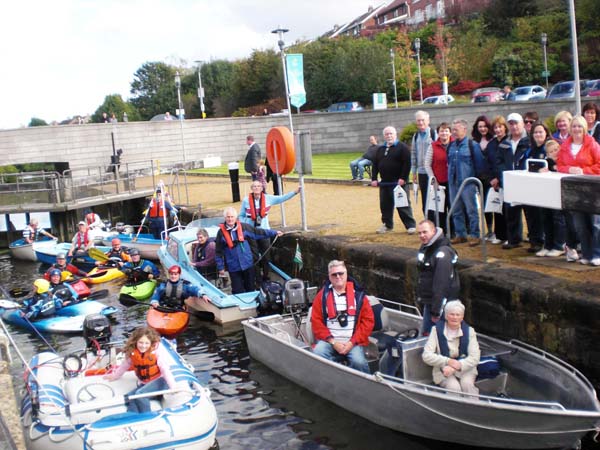
There are 17 locks in total along the Lagan navigation between Stranmillis and Lisburn as listed below:
Lock 3 under restoration June 2009
Lock 1 – known as Molly Ward’s, after the 18th century tavern run by Molly and her husband, a lock-keeper. The site of their original cottage is now home to Stranmillis Boat Club and it’s remains can be seen in the car park at Cutters Wharf.
Lock 2 – Known as Mickey Taylors – the long-standing lock keeper.
Lock 3 – Known as McLeave’s Lock. One of the few places on the Lagan Canal where the lock-keeper’s house and stone bridge all remains intact. This is currently undergoing restoration.
Lock 4 – Here a footbridge leads to the picnic site where the Lagan races over Eel Weir.
Lock 5 – The peaceful stretch of canal between the forth and the fifth locks provide important wetland habitat for birds.
Lock 6 – Known as the Drum. Relics of the navigation are evident at the sixth lock where tie up bollards to secure barges still remain.
Lock 7 – Known as McQuiston’s, still has the original arch bridge. Though the lock house lies in ruin, its sandstone remains can be seen by crossing the small stone bridge.
Lock 8 – Ballyskeagh High Bridge, a rather majestic sandstone bridge, can be found nearby here.
Lock 9 – The industrial buildings adjacent to the lock, dominates the edge of the towpath where it meets Tullynacross Road. A bleach green was first established here between the river and canal in 1626.
Lock 10 – Here at Hilden the towpath approaches the tenth lock and crosses the road next to an old bridge. Just beyond the bridge is the site of one of the last working mills in Ireland.
Lock 11 – Following a bend in the river the towpath passes the eleventh lock, known locally as Scott’s Lock. At this point three water courses run parallel with each other, the river, the canal and the mill race.
Lock 12 – Known as Hanna’s Lock this was recently restored as part of the Lagan Valley Island Project.
Lock 13 – This is often referred to as Becky Hogg’s after the lady who worked the lock.
Lock 14,15,16 &17 – Commonly known as Union Locks, the flight of 4 locks and a passing chamber were built to overcome a difference of 26ft (8m) in level between the Lagan and the channel that would have linked the Lagan Navigation with Lough Neagh.
